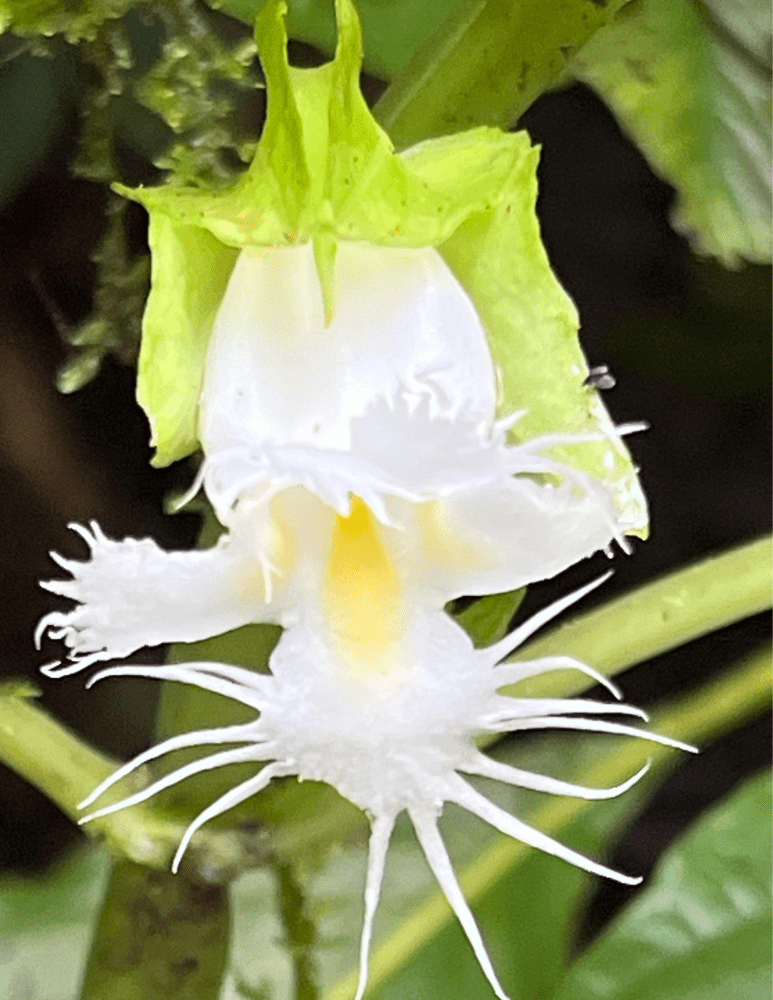

 Costa Rica had been on our bucket list as a travel destination for so long, I’d lost track of how it got on the list in the first place. What we know about the country has come to us through National Geographic images and video programs of exotic birds and animals still flourishing despite all the challenges to their habitats. We elected to join a touring company that partners with National Geographic to learn more about the country from the guides and experts whose job it is to love the natural world and teach people how to care for it. As we traveled around the country in a small van over washboard roads, through rapidly changing unpredictable weather with a dozen or so other people from the US, Mexico, Canada, and Great Britain–we began to understand how visiting those places changes us, its visitors.
Costa Rica had been on our bucket list as a travel destination for so long, I’d lost track of how it got on the list in the first place. What we know about the country has come to us through National Geographic images and video programs of exotic birds and animals still flourishing despite all the challenges to their habitats. We elected to join a touring company that partners with National Geographic to learn more about the country from the guides and experts whose job it is to love the natural world and teach people how to care for it. As we traveled around the country in a small van over washboard roads, through rapidly changing unpredictable weather with a dozen or so other people from the US, Mexico, Canada, and Great Britain–we began to understand how visiting those places changes us, its visitors.
With six other members of our group, we’re floating down a narrow river in two inflatable rafts, paddling only when directed by our guide, Carlos. Rich and I had chosen this activity among the myriad of possibilities because, rather than white water rafting, this lazy river version would allow us to see more wildlife and slowdown from the frenetic pace of our regular lives. We’re wearing the recommended river shoes, and it doesn’t take long to realize the wisdom in that attire–the boat takes in water, and our feet are getting wet. Sitting on the edge of the raft is extremely uncomfortable for me, and I begin wondering if I will be able to stand or walk once this part of the adventure is over. Someone suggests we switch sides, which doesn’t seem like that could make a difference, but we do, and it does. I’m now comfortable enough to focus on why we’re here–to bask in the beauty of the rainforest and discover it’s treasures.
Carlos is a bundle of positivity. Extremely enthusiastic and knowledgeable about the animals and plants he is a part of the process of what’s saving them and their habitat. As we drift from side to side and hold up to get a better look at a monkey or bird Carlos has identified, I’m realizing this trip would be of little value without him. We need him to first see what we cannot, and then, teach us how to notice the flutter of a leaf, and tend to the subtle sound of a chirp or the sound of a dramatic howl. And some wildlife are still alive because they camouflage themselves. A sleeping owl’s markings match so well the tree trunk she sleeps on, they appear as one item. Slowing down is a prerequisite for each discovery.
We would learn later about the technology that had threatened to wipe out these diverse animals and plants–the power chainsaw. That tool was brought in to clear cut the forest and make room for dairy farming in the 1950s, deforesting large swaths of the landscape. Carlos brings a piece of technology that is saving the rain forest and its inhabitants–a telescopic lens. He invites us to become like the National Geographic photographers we’ve admired. He places our phone cameras on his telescope and creates the intimate closeup images that allow us to begin a relationship with sloths and monkeys, Macaws and Toucans.
We have a small mission on our journey, to plant two trees, one for each raft, in one of the open spaces where the protected riverside foliage is sparse. These outfitters have pledged to plant a tree for each raft of visitors they bring down the river and it’s our turn. I elect to not trudge the uneven ground in my water shoes and stay in the boat to become the photographer.
As boatmates climb on the shoreline and dig the hole, Carlos tell us we need to name our tree.
Now I get it. We are involved in a ritual, a tiny part of the reforestation projects that Costa Rica has become famous for. Once we name this tree, we have a relationship. Someone mentions they’d love to return to the spot in a few years and see its progress. I suggest the name “Delores” after one of our tour mates who, while posing for a picture the previous day had backed up too close to the edge of a cliff and fell 20 feet into a ravine. It was our group members combined willing efforts that joined together pulled her up and out. The fact that she survived, unscratched and unscathed the following day, (not even a bruise or sore muscle) convinced Carlos that she would be the perfect model for what we wish for our young tree. At dinner that evening images of monkeys and sloths, Macaws and Toucans join the images of family members on our phones that we share with one another and bring back to share with people in our own communities and countries.

